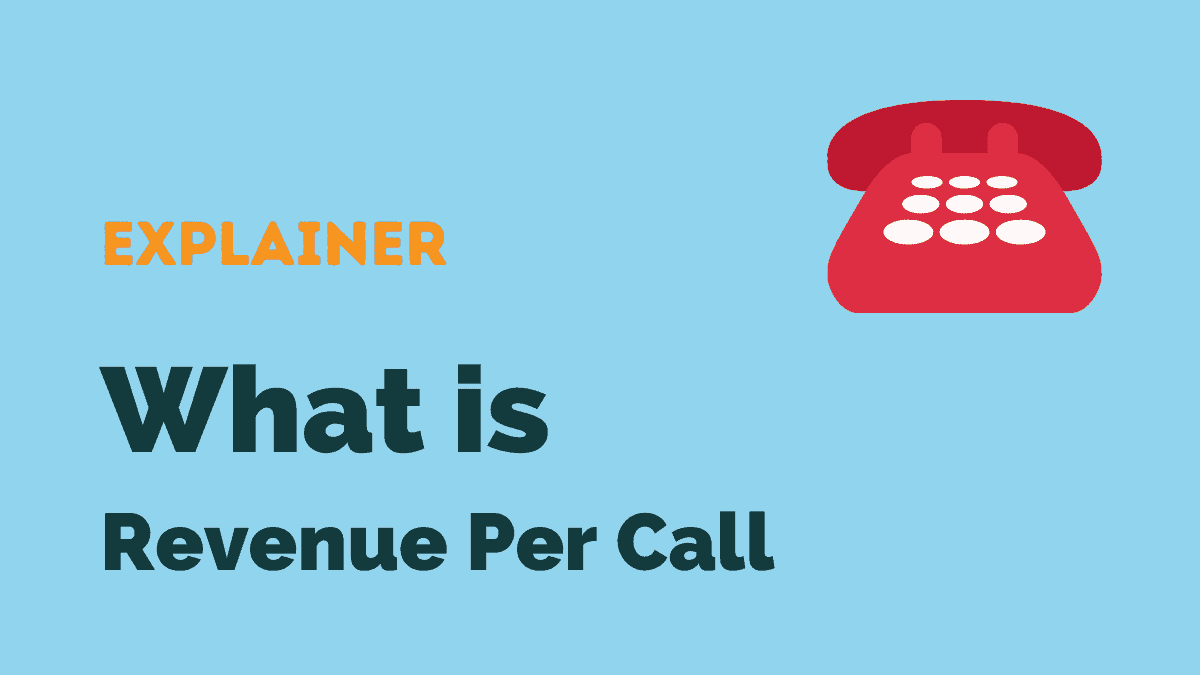In this post:
- What is revenue per call?
- How to calculate revenue per call?
- How to use revenue per call
- How to improve revenue per call
What is revenue per call?
Revenue per call estimates the average income brought in by each call your contact center handles. It’s a helpful way to track the performance of individual agents, teams, offices, or entire businesses, and you can use it for both outbound calls and inbound calls.
How to calculate revenue per call
Calculating revenue per call is simple. First, decide on the subsection of calls you want to measure. Then calculate the total amount of revenue generated by these calls and divide this by the total number of calls to your contact center.
Here’s an example:
Say you wanted to measure the revenue per outbound call generated by your London office in March. To calculate this, you’d have to discover:
- The total number of outbound calls the office made in March
- The revenue generated by the London office during that period
If A is 1100 calls and B is £60,300, your revenue per call is:
60,300/1100 = £54.81
Other factors to consider
When measuring revenue per call, eliminate abandoned or dropped calls from the calculation. This ensures you only consider calls that connect successfully.
Contact centers that offer omnichannel service should calculate revenue per interaction instead of (or as well as) revenue per call. The formula for this is the same: total up your revenue and then divide this by all interactions.
You can calculate revenue per call as often as you like. Doing so every month will provide a good idea of how the metric changes over time.
How to use revenue per call
Revenue per call is a useful call center metric for calculating revenue generation.
You can use it to:
Measure team performance
Identify high-performing teams by tracking revenue per call. Look at what makes teams successful and implement this across your organization. Or identify below-average performers and offer tips to help them improve.

Measure agent performance
Use the metric to discover star reps. Provide benefits to high achievers to encourage others to meet their standards.
Measure improvements over time
Use revenue per call to measure the impact of new tactics. Imagine you start a campaign of targeted upselling: tracking revenue per call before, during, and after the change will show the impact it has on sales.
Calculating revenue per call over time will also highlight seasonal issues that can affect revenue.
Measure contact center profitability
Use revenue per call alongside cost per call to get a better idea of overall contact center profitability.
How to improve revenue per call
There’s no secret to improving revenue per call. You either need to reduce the number of low-performing calls or increase the amount of money each call brings in.
Here are some strategies you can use:
Upselling and cross-selling
Encouraging agents to upsell or cross-sell can increase the revenue your contact center brings in. This will increase your average revenue per call metric.
Train low-performing teams
Identifying low-performers is a good opportunity to provide training, insight, and best practices to improve performance. If you can increase the sales generated by underperforming teams or agents, you’ll increase overall revenue per call.
Use top performers to drive sales
Top performers are a major asset for any business. Make the most of their expertise by turning them into sales coaches. Incentivize high-performers to go further with specialized coaching and rewards.
Improve offer targeting
Better offer targeting can improve the chances of selling to a prospect. Provide agents with customer data such as order history or website visits to help them discover the best offers.
Also, provide materials to ensure reps know what to look for and how to frame offers in the most attractive way.
Remove low performing calls
Some calls simply bring in less revenue than others. Cold calls, for example, will never bring in as much as those that go out to warm leads. Or you could have low success rates during certain times of the year.
If you’re struggling with your revenue per call, consider stopping some of the worst-performing call types.




